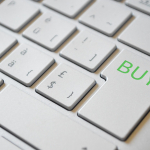In today’s uncertain economic landscape, building a resilient emergency fund becomes increasingly essential. With inflation eroding purchasing power, having a financial safety net can prevent unexpected expenses from derailing your budget. Establishing this fund not only provides peace of mind but also empowers you to face monetary challenges with confidence. By understanding your current financial situation and implementing effective strategies, you can create an emergency fund that not only sustains you but also adapts to rising costs over time.
Understanding the Importance of an Emergency Fund

An emergency fund serves as a financial safety net, providing crucial support during unexpected situations. Here are key reasons why building one is essential:
- Security Against Unforeseen Expenses: Life is unpredictable. Whether it’s a medical emergency or sudden home repairs, an emergency fund ensures you’re prepared.
- Reduction of Debt Risks: Without savings, you may resort to credit cards or loans, leading to debt accumulation. An emergency fund helps you avoid high-interest costs.
- Financial Independence: Having a safety net allows you to make decisions with less stress. You can leave a job, take a pay cut, or invest in new opportunities without fear of financial instability.
- Peace of Mind: Knowing you’ve set aside funds for emergencies can significantly reduce anxiety, allowing you to focus on long-term financial goals.
In summary, an emergency fund not only provides immediate financial stability but also empowers you to face life’s challenges confidently. Start building yours today to secure your financial future.
Assessing Your Current Financial Situation

Before you can effectively build your emergency fund, it’s essential to assess your current financial situation. This evaluation allows you to identify areas where you can improve and direct funds toward savings. Consider the following steps:
- Calculate Your Income: Determine your total monthly income, including salary, bonuses, and any side income.
- Track Your Expenses: List all your monthly expenses categorized into needs (e.g., rent, groceries) and wants (e.g., dining out, entertainment).
- Identify Your Savings Potential:
- Compare Income vs. Expenses: Subtract your total expenses from your income. This calculation will highlight how much you can allocate towards your emergency fund.
- Set Financial Goals: Decide how much you want to save. Aim for 3-6 months’ worth of living expenses to establish a solid emergency fund.
- Review Your Debt: Assess outstanding debts and interest rates. Prioritizing high-interest debt repayment can free up additional funds for savings.
By understanding where you stand financially, you can create a tailored plan that maximizes your savings potential.
Strategies for Building Your Emergency Fund
Establishing a robust emergency fund requires careful planning and commitment. Here are effective strategies to help you build your fund:
- Set Clear Goals: Determine how much you need. A common target is 3-6 months of living expenses. This gives you a tangible goal to work toward.
- Automate Savings: Set up automatic transfers from your checking account to your savings account. Consider setting aside a specific percentage of your income each month.
- Cut Unnecessary Expenses: Review your budget and identify areas to reduce spending. Direct these savings to your emergency fund.
- Increase Income Sources: Consider side gigs or freelance work. Allocate any additional earnings directly to your fund.
- Use Windfalls Wisely: Direct bonuses, tax refunds, or monetary gifts straight to your emergency savings. These unexpected funds can give your savings a significant boost.
- Monitor and Adjust: Regularly review your savings plan. Increase your contributions as your financial situation improves.
Following these strategies can turn your savings goal from a distant dream into a reality.
Tips for Maintaining and Growing Your Fund During Inflation
Inflation can erode the value of your savings, but with the right strategies, you can effectively maintain and grow your emergency fund. Here are some actionable tips:
- Regular Contributions: Commit to depositing a fixed amount monthly into your emergency fund. Setting up automatic transfers can simplify this process.
- High-Yield Savings Accounts: Choose accounts offering competitive interest rates that can outpace inflation. This ensures your money retains its purchasing power.
- Reassess Your Budget: Re-evaluate your monthly expenses and look for non-essential costs to reduce. Redirect these savings to bolster your emergency fund.
- Diversify Investments: Consider diversifying a portion of your emergency fund into low-risk investments, such as bonds or mutual funds, which may yield higher returns than traditional savings accounts.
- Stay Informed: Monitor inflation rates and adjust your fund accordingly. As prices rise, periodically evaluate if your goal amount is sufficient to cover necessary expenses.
By employing these strategies, you can keep your emergency fund resilient against inflationary pressures while ensuring financial security.
Frequently Asked Questions
What is an emergency fund, and why is it important?
An emergency fund is a financial safety net that is set aside to cover unexpected expenses or emergencies, such as medical bills, home repairs, or job loss. It is important because it provides financial security and peace of mind, allowing individuals to navigate unplanned financial hardships without resorting to debt or compromising their long-term savings goals. Ideally, an emergency fund should cover three to six months’ worth of living expenses, ensuring that you can manage through challenging times effectively.
How much money should I aim to save in my emergency fund?
The recommended amount to save in your emergency fund typically ranges from three to six months’ worth of living expenses. To determine the appropriate amount for you, evaluate your monthly expenses—including housing, utilities, groceries, and debt obligations—and multiply that figure by three to six. Factors such as job stability, dependents, and personal comfort levels may influence how much you ultimately decide to save. It’s essential to regularly reassess and adjust your fund as your circumstances change.
What tools or accounts are best for setting up an emergency fund?
When setting up an emergency fund, consider using a high-yield savings account or a money market account, as these options provide easy access to your funds while earning you interest. It’s important to choose accounts that offer low fees and allow for withdrawals without penalties. Online banks often provide higher interest rates compared to traditional banks. Additionally, ensure that your emergency fund is separate from your regular checking or savings account to deter the temptation to use these funds for everyday expenses.
How can I build my emergency fund while managing other financial responsibilities?
Building an emergency fund while juggling other financial responsibilities requires a strategic approach. Start by evaluating your budget to identify areas where you can cut back on discretionary spending. Consider automating your savings by setting up a recurring transfer from your checking account to your emergency fund each month. Additionally, seek out ways to boost your income, such as side jobs or freelance work, and designate a portion of any unexpected windfalls, like tax refunds or bonuses, directly toward your emergency fund. This disciplined approach will help you grow your savings without adding undue financial stress.














Comments are closed.